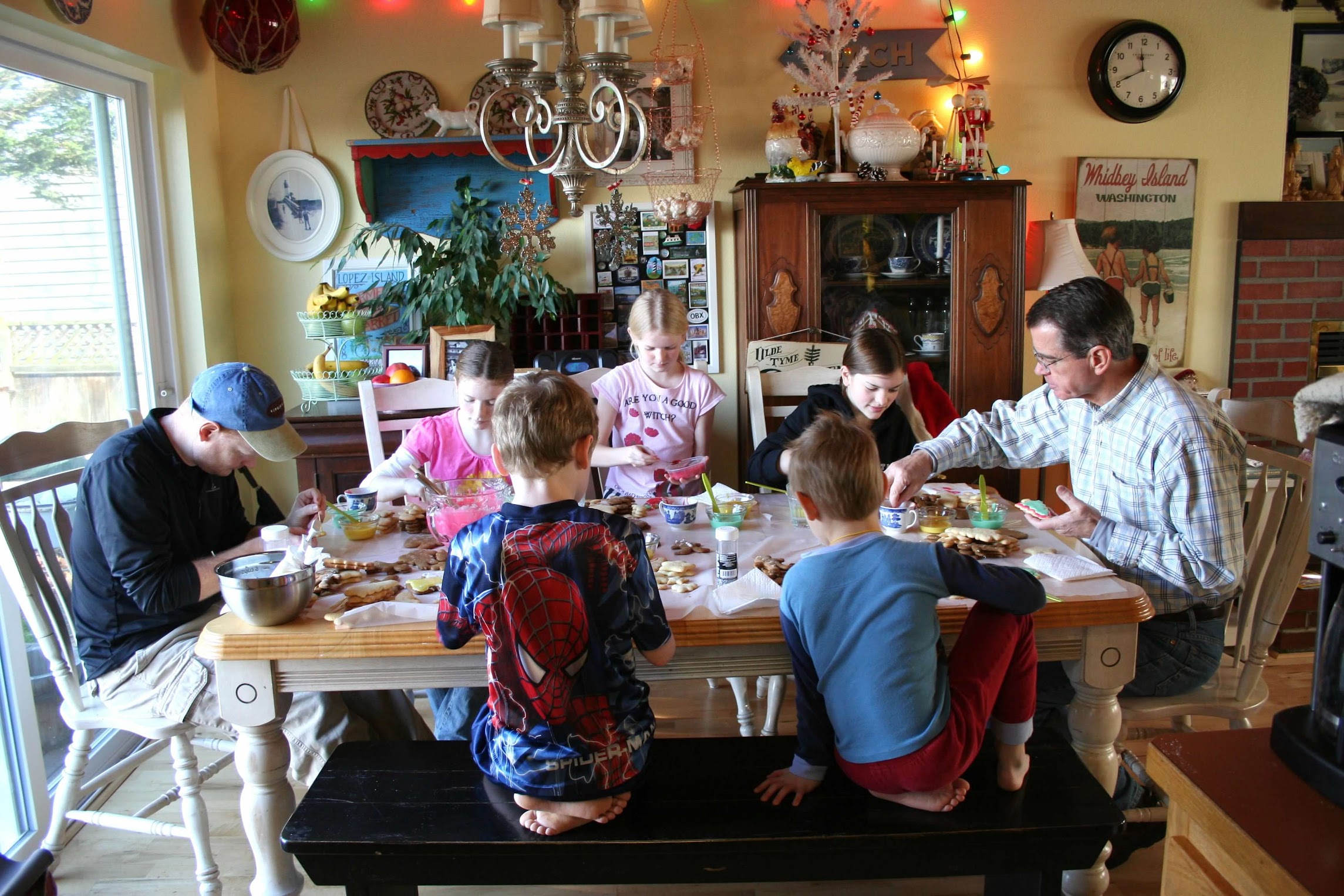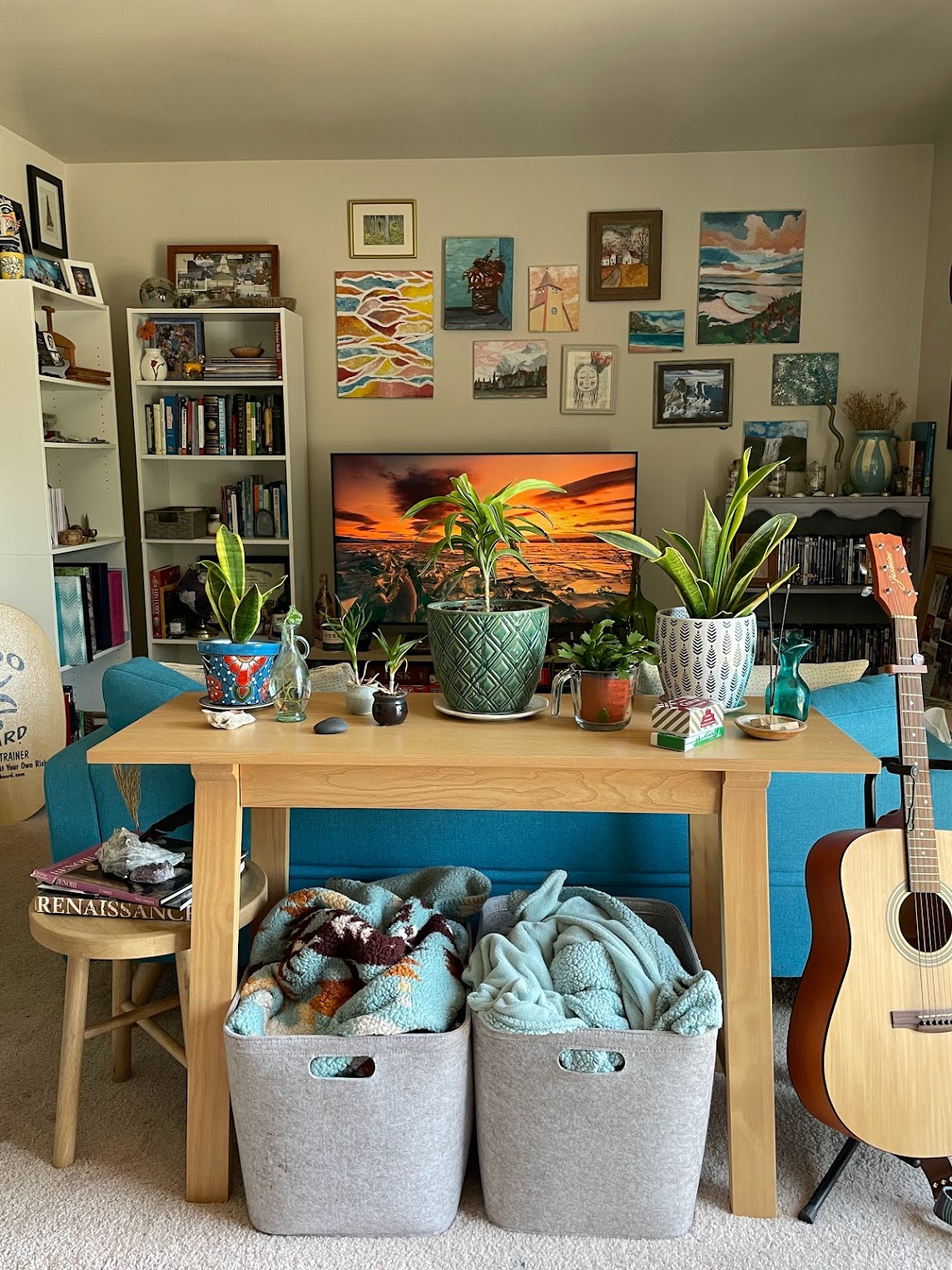
As a Scandi-American, I grew up with coziness at the center of our home. Hygge was key in the way we decorated, interacted with the seasons, and viewed the world. My mother hung dried lavender from our garden from the ceilings in our living room, and the cottage I grew up in was filled with handmade blankets, candles, warm hues, baked goodies, and piles of sweaters. The seasons were at the core of our lives, as they are for fellow Danish and Norwegian people, and all other Nordic nationalities.
You grow up being told to wear lots of layers no matter the season, never buying berries that you can pick yourself, always having some kind of fire burning (whether that be a candle or fireplace), pickling everything to have pieces of other seasons with you, and celebrating the solstices and equinoxes. For Nordic people like myself, the seasons are everything. The shifts in the land and weather and climate define our lives. As children, we are taught to seek warmth and listen to our parents who tell us that the secret the staying warm is to cover our heads and our feet. “Most of your body heat is lost through your head,” my dad would tell me, handing me hand-knitted hats when I’d forget to wear one. We wore socks with our sandals to keep warm, and most gatherings were centered around a fire—whether that was flickering candles around a table, a roaring fireplace, or a bonfire. Even with all this warmth-seeking, Nordic children are always taught about the value of the cold as well.
The Danish side of my family was relentless in telling me about the benefits of ice swims and cold showers. Even as an adult, I still turn my shower faucet all the way cold, a minute before getting out, letting the icy water run over my body. It grounds me in my heritage, my childhood, and my ancestry. It also is a great way to feel alert and slow my heart rate.

The word “hygge” has hit the mainstream, and as it often does with these things, has a diluted meaning in American culture. People think it means cute candles and fluffy socks; Instagram pictures of cookies and cozy nights. The coziness is a part of it, but it’s not an aesthetic for us Scandis. It’s a philosophy, and an outlook on life. It encompasses yes, the socks and the blankets, but it also includes the mindfulness of the seasons and those childhood memories we have of our fathers taking us out for icy swims. I can’t imagine my childhood without images of my dad and I swimming in freezing water, while onlookers would be sitting on the shore, horrified that anyone would get into water so cold. Hygge is grounded in embracing the seasonal shifts, and leaning into them. Without that context behind the socks and blankets, people use it as an excuse to buy more vanilla-scented candles from big-box stores.
To me, hygge is the smell of æbleskivers and cranberries, signaling to me that it was the winter solstice. It’s the pickled taste of rødkål in my little mouth as a kid, reminding me that it’s the holiday season. It’s the softness of hand-quilted blankets draped around my shoulders as I stand in the snow, watching the stars with my dad. It’s the jolt through my body as I swam in the sea while there was still snow on the ground. Hygge is the heat of our fireplace warming my damp skin after playing in the rain with my sisters in the spring. It’s the comfort of my chunky, knit socks keeping my toes dry during the wet season in my tevas, and the taste of strawberry jam that my mom canned from berries we picked. It’s the smell of our lavender from the garden drying, the warmth of the yellow paint on our walls, and the tanginess of agurkesalat in the summertime. Hygge is the roasting of pumpkin seeds, the spiced taste of kanelsnegle, and the crunching sounds beneath our feet on our leaf walks. Every Nordic person has their own memories involving hygge, but to all of us it’s this—a seasonal life.

As a 25-year-old, I still center my life around hygge. When the weather gets cold, my body starts craving æbleskivers, lingonberries, elderberries, rødkål, rugbrød, and anything with cinnamon on it. When it’s warm, I find myself pickling everything, feasting on rabarbertærte (Norwegian rhubarb pie), and preparing for the cold ahead. I still celebrate the pagan seasons that my ancestors did, make the dishes that make me feel a sense of hygge, and honor the seasons every day. And yes—I also light candles, my closets have more blankets in them than most people’s do, and I am still a big fan of wearing socks with sandals.
You don’t have to be Danish, Norwegian, or any kind of Scandi to bring hygge into your home. Start with tangible actions, like making candles using scents that honor the current season you’re in (for example, use clove oil in cold months) or keeping your living room stocked with baskets of blankets. Fill your home with warmth—whether that be warm colors, incense sticks, baked goods, or candles. Dress for the season (as a kid, we had a cold weather and warm weather set of clothes—when summer ended, our shorts went away into storage to ensure we dressed in companionship with the season), eat seasonal ingredients, and make sure your living space is a comfortable one—one that you’d want to spend your time in.
Once you have those actions down, and you can visually see what hygge looks like, try shifting your mindset as well. Pay attention to the seasonal changes, celebrate the equinox, go earthing, and try to match your life to the season at hand. For example, in the autumn, embrace the idea of transformation, think about the concept of the harvest, and always admire the changing leaves. Eventually, everything will come together and you’ll be living a seasonally-bonded, nature-minded, hygge-centered life. If you want to honor the culture that brought the concept to you, try incorporating Danish dishes into your diet or learn some words in Danish. It’s an old language, and it’s a fun one to learn.

So, it’s true that people from the Nordic countries love hygge. That is one stereotype that is very accurate. I always say you can tell if someone is Scandi immediately if they have three things in their home—blankets in a central spot of their living room, at least three kinds of pickled things in their fridge, and more candles than lamps. But as mentioned, it’s more than coziness. It’s our way of surviving and embracing our long winters of darkness, our long summers with only sunlight, and our isolation in the north. Those of us whose families immigrated south still carry that with us. It’s written on our palms like fortunes, and it shapes the way we exist in our new space. The stories told around candlelight of our Viking ancestors still echo inside us as we think about what courage is, or what exploration means to us. Hygge is at the center of it all, and it’s the reason I can’t leave the house without thinking of my dad putting a hat on my head, and it’s the reason I put one on myself now.
Get more like this—Sign up for our daily inspirational newsletter for exclusive content!
__
Photo: Emily Iris Degn




